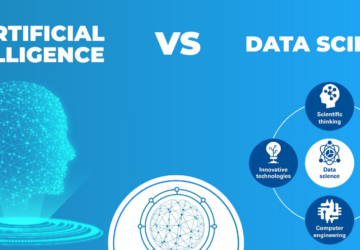In today’s digital marketplace, establishing brand authority is pivotal. While traditional marketing tactics still hold value, the digital age demands a more nuanced approach — one that involves a symbiotic relationship between content marketing and search engine optimization (SEO). Through this intricate dance, brands can not only reach their audience but also establish a commanding presence in their industry. Here’s how to harness the power of SEO content marketing to build brand authority.
Understanding the SEO Content Marketing Nexus
The Foundation of SEO in Content Marketing
SEO and content marketing, while distinct disciplines, are fundamentally interconnected. The crux of SEO content marketing lies in crafting valuable content that is optimized for search engines. This doesn’t mean merely stuffing keywords into paragraphs but developing a strategic approach to ensure that the content answers the queries of your target audience. It begins with thorough keyword research, understanding search intent, and crafting content that seamlessly integrates these elements while providing genuine value to the reader.
Content as a Vehicle for SEO
Once the groundwork of SEO is laid, content acts as the vehicle to deliver your brand’s message. The content must be informative, engaging, and, above all, authentic to your brand voice. It’s not enough for your articles to surface at the top of search results; they must resonate with the reader, prompting them to engage with your brand further. High-quality content fosters trust and positions your brand as a thought leader in your respective field.
The Role of Consistency and Quality
Consistency in publishing high-quality content is a key driver in building brand authority. Search engines favor websites that provide fresh content regularly. However, this doesn’t imply sacrificing quality for quantity. Each piece of content should be crafted with the intent to inform, engage, and convert. Over time, this consistent effort elevates your brand’s position in search engine rankings and in the minds of consumers.
Keyword Research: The Starting Line
Identifying Your Brand’s Keyword Profile
The foundation of a successful SEO content marketing strategy is comprehensive keyword research. This process involves identifying the terms and phrases your target audience uses when searching for information online. It’s not just about what your brand wants to convey but also about the questions and needs of your customers. Finding this alignment is crucial for creating content that is both findable and relevant.
The Evolution of Keyword Intent
Search engines have evolved to prioritize user intent over sheer keyword density. Therefore, understanding the different types of keyword intent — informational, navigational, transactional, and commercial — is essential. Brands need to develop content that addresses these various intents at different stages of the customer journey. By doing so, they create a content ecosystem that guides users from discovery to decision-making.
Tools and Techniques for Effective Research
Numerous tools and techniques can aid in keyword research. From Google’s own Keyword Planner to more sophisticated platforms like SEMrush or Ahrefs, these tools provide insights into search volume, competition, and related queries. Leveraging this data enables brands to create a targeted content strategy that speaks directly to their audience’s interests and search behaviors.
Crafting High-Value Content
Meeting the Audience’s Needs
Content creation should always start with the audience’s needs in mind. High-value content answers questions, solves problems, and provides actionable insights. It requires understanding not only who your audience is but also what challenges they face. By addressing these challenges, your content becomes a resource, and your brand becomes an authority.
The Pillars of Shareable Content
For content to gain traction, it should be shareable. Shareability hinges on several factors: the content must be original, insightful, and, ideally, evoke an emotional response. It should also be easy to digest and share, whether through a compelling narrative, an easy-to-follow list, or eye-catching graphics. Shareable content extends your reach and enhances your brand’s visibility.
Quality Above All
The adage “quality over quantity” is paramount in SEO content marketing. Search engines like Google have sophisticated algorithms that can distinguish between high-quality, original content and low-effort, duplicated material. Therefore, investing time and resources into creating well-researched, thoughtfully written, and expertly crafted content is a must for any brand looking to build authority.
Optimizing for User Experience
The Importance of User Experience in SEO
User experience (UX) is a critical factor in SEO. It’s not only about making your site accessible to search engines but also about providing a seamless and enjoyable experience for users. Content must be easily readable, navigation should be intuitive, and pages must load quickly. A positive UX can decrease bounce rates and increase the time visitors spend on your site, both of which can contribute to higher search rankings.
Responsive Design and Mobile Optimization
With mobile devices accounting for over half of web traffic globally, a mobile-optimized site is a necessity. Responsive design ensures that your content looks good and functions well on any device, be it a desktop, tablet, or smartphone. Mobile-friendliness is also a ranking factor for search engines, making it a critical component of any SEO strategy.
Balancing Aesthetics with Accessibility
While a visually appealing website can draw users in, it’s crucial that aesthetics don’t come at the expense of accessibility. Sites must be designed with all users in mind, including those with disabilities. Proper use of headings, alt text for images, and color contrast can make your content more accessible, improving UX and SEO.
Leveraging Social Media for SEO Gain
Social Signals and SEO
While social media may not directly influence search engine rankings, the social signals — likes, shares, and comments — can lead to greater visibility and indirectly affect SEO. Engaging content that garners a strong social media response often earns backlinks, which are pivotal for SEO. Additionally, social platforms can serve as search engines themselves, with users often seeking information directly within these channels.
Integrating Social Sharing Into Content Strategy
For content to perform well on social media, it must be crafted with shareability in mind. This involves understanding the nuances of each platform and tailoring content accordingly. For instance, LinkedIn favors professional, long-form content, while Instagram is all about visuals. A smart strategy involves repurposing content to fit the format and audience of each platform.
Tracking Social Engagement for Insights
Analyzing social media engagement can provide valuable insights into which types of content resonate with your audience. This data can inform future content creation, helping to refine your strategy over time. Tools that track mentions, shares, and the overall performance of content on social platforms are essential for brands serious about leveraging social media for SEO gain.
SEO content marketing is not just a tactical approach to gain higher search rankings; it’s a strategic endeavor to build brand authority and connect with audiences in a meaningful way. The emphasis on strategic partnerships and tapping into external expertise can significantly amplify these efforts. RiseOpp, with its expertise in Fractional CMO services, also incorporates these principles in their approach to content strategy, reflecting the need for comprehensive marketing solutions. Their method of integrating marketing leadership with in-depth market analysis and audience engagement helps lay the groundwork for a strategy that transcends the standard SEO playbook. By adopting such a multifaceted approach, businesses can not only expand their digital footprint but also establish a stronger brand presence.
Building a Network of Backlinks
The Power of Quality Backlinks
Backlinks — links from other websites to your content — are one of the most significant factors in SEO rankings. They act as votes of confidence from one site to another, indicating that the content is valuable and authoritative. However, not all backlinks are created equal. Links from high-authority, relevant sites have much more weight than those from low-quality, spammy sites.
Ethical Link Building Strategies
Ethical link-building involves creating content that naturally attracts backlinks and reaching out to relevant websites to request links. Guest blogging, creating shareable infographics, and participating in industry forums can also be part of a successful link-building strategy. It’s important to avoid black-hat SEO practices, like buying links or participating in link schemes, which can result in penalties from search engines.
Measuring Backlink Quality
Tools like Moz’s Domain Authority or Google’s Search Console can help you assess the quality of your backlinks and monitor your link profile. Regularly auditing your backlinks ensures that you maintain a healthy link profile and can also reveal opportunities for improvement. A strategic approach to backlinking can greatly enhance your brand’s authority and visibility in search results.
Analyzing and Adapting Your Strategy
The Necessity of Analytics in SEO
Data analytics is crucial for evaluating the success of your SEO content marketing efforts. By analyzing metrics such as traffic, bounce rate, conversion rate, and search rankings, you can gain insights into what is and isn’t working. Tools like Google Analytics offer a wealth of data that can be leveraged to adapt and improve your strategy over time.
Responding to SEO Shifts
SEO is a constantly evolving field, with search engines regularly updating their algorithms. Brands must stay informed of these changes and be willing to pivot their strategies accordingly. This may involve revisiting keyword research, updating existing content, or even overhauling your site structure.
Continuous Learning and Improvement
The realm of SEO content marketing is one of perpetual learning. By staying abreast of industry trends, attending webinars, and reading authoritative SEO blogs and resources, marketers can continuously refine their strategies. Adapting to the dynamic digital landscape is a must for maintaining and growing brand authority.
Integrating Multimedia and Interactive Elements
The Rise of Visual Content
Text isn’t the only form of content that matters in SEO. Images, videos, infographics, and other multimedia elements can significantly enhance the appeal and engagement of your content. Moreover, they can improve dwell time on your site, which is a positive signal to search engines. Ensuring that all multimedia content is properly tagged with descriptive alt text is also crucial for SEO.
Interactive Content for Enhanced Engagement
Interactive elements such as quizzes, polls, and interactive infographics can significantly boost user engagement. These elements encourage users to spend more time with your content, providing more data for search engines to assess the value of your site. Furthermore, interactive content is highly shareable, increasing the potential for backlinks and social media buzz.
Technical Considerations for Multimedia
While multimedia can enrich the user experience, it’s important to balance this with page load speed — a critical SEO factor. Compressing images, using appropriate file formats, and employing lazy loading can help ensure that multimedia doesn’t negatively impact your site’s performance. Using responsive design principles ensures that multimedia content is accessible and performs well on all devices.
The Synergy of SEO and Public Relations
Earning Media Coverage Through SEO
Public relations can play a significant role in SEO content marketing by earning media coverage that leads to high-quality backlinks. By positioning your brand’s content as newsworthy and leveraging media relations, you can attract attention from journalists and bloggers in your industry. This not only builds brand authority but also contributes to your SEO efforts through organic link acquisition.
Strategic Content Promotion
Promoting your content through PR channels requires a strategic approach. This involves identifying the right media outlets, crafting compelling pitches, and building relationships with industry influencers. Content that has a strong narrative and provides unique insights is more likely to capture the media’s attention and result in coverage.
Measuring PR Impact on SEO
The impact of PR on SEO can be measured through increases in referral traffic, brand searches, and the acquisition of new backlinks from reputable sources. Tools like Google’s UTM parameters can track the direct traffic from PR campaigns, while other SEO tools can monitor the growth in backlinks and search visibility. Analyzing these metrics can demonstrate the value of integrating PR with your SEO content marketing strategy.
The Evolution of SEO Content Marketing
Staying Ahead of Algorithm Changes
Search engines are continually refining their algorithms to provide users with the most relevant and high-quality results. Keeping abreast of these changes is crucial for SEO content marketers. It requires not only monitoring industry news and updates from search engines themselves but also being prepared to adapt content and strategies promptly to maintain visibility and authority.
Incorporating Emerging Technologies
Emerging technologies like artificial intelligence, voice search, and machine learning are beginning to shape SEO. Content marketers should consider how these technologies affect search behavior and the discoverability of content. For example, optimizing for voice search may involve focusing on more natural language queries and FAQs.
The Future is User-Centric
Ultimately, the future of SEO content marketing lies in being user-centric. It’s about anticipating the needs and behaviors of users and creating content that not only ranks well but also truly serves the audience. Whether it’s through personalization, improved user experiences, or multimedia integration, the brands that prioritize their audience will build lasting authority in their industries.
Navigating the complexities of SEO content marketing requires a nuanced understanding of both your audience and the ever-evolving landscape of search engine algorithms. By focusing on creating high-quality, relevant, and engaging content, optimizing for user experience, leveraging social signals, and staying ahead of technological trends, brands can establish and maintain authority in their respective fields. The key to success lies in the willingness to learn, adapt, and innovate in the pursuit of excellence in content marketing.









